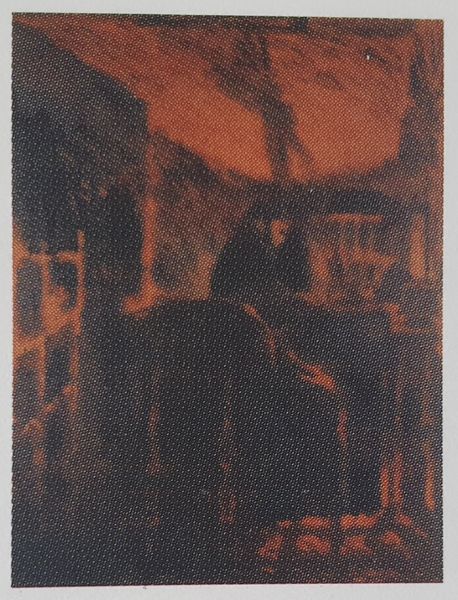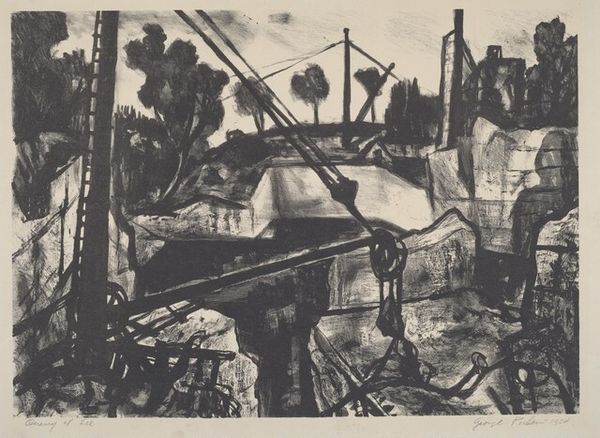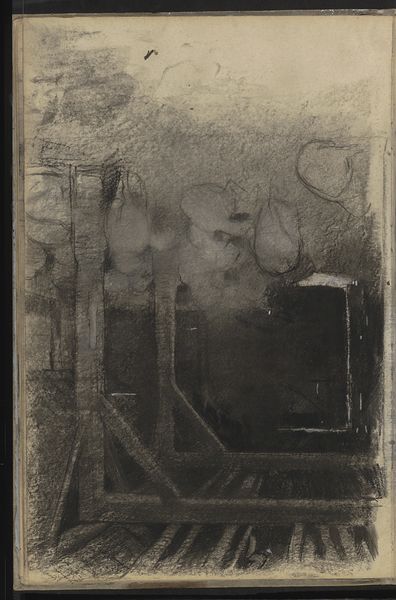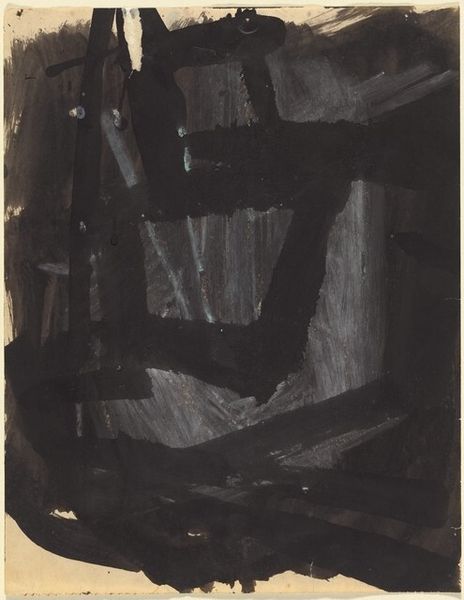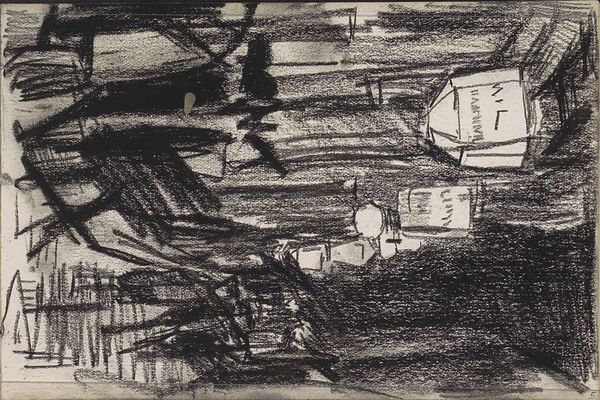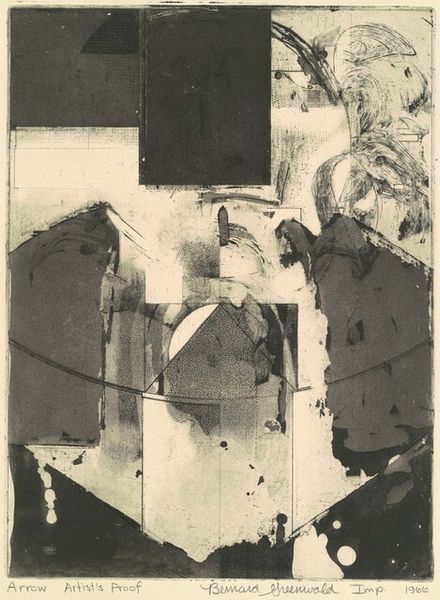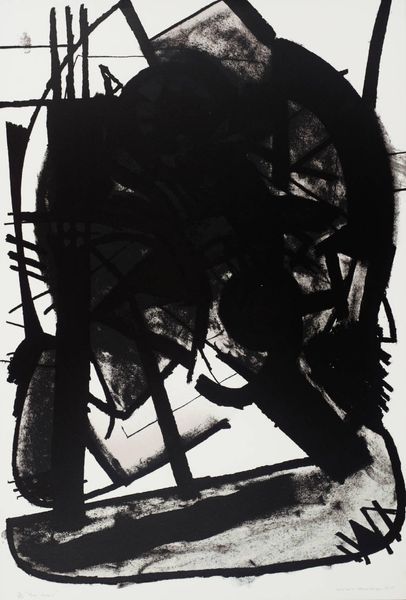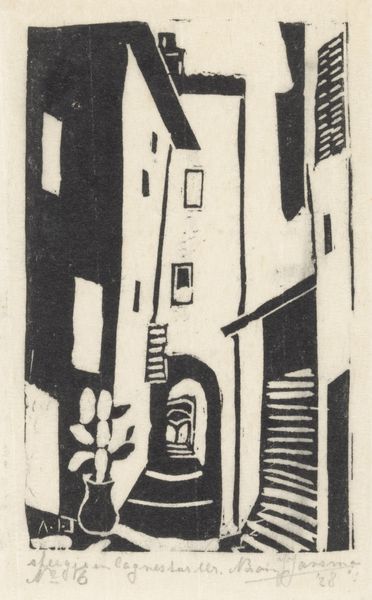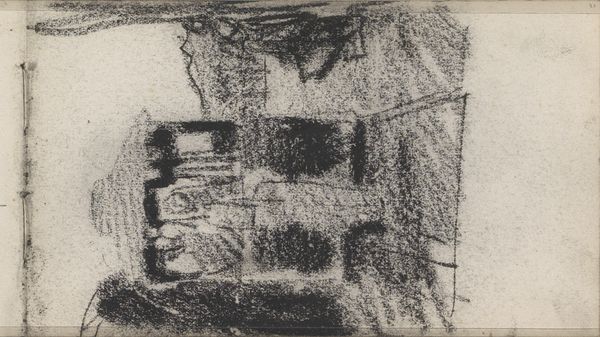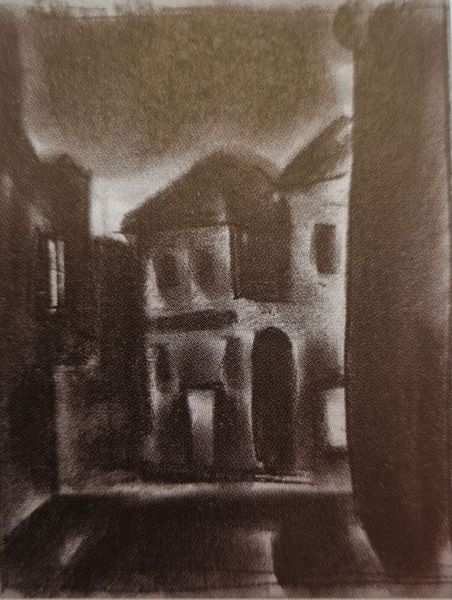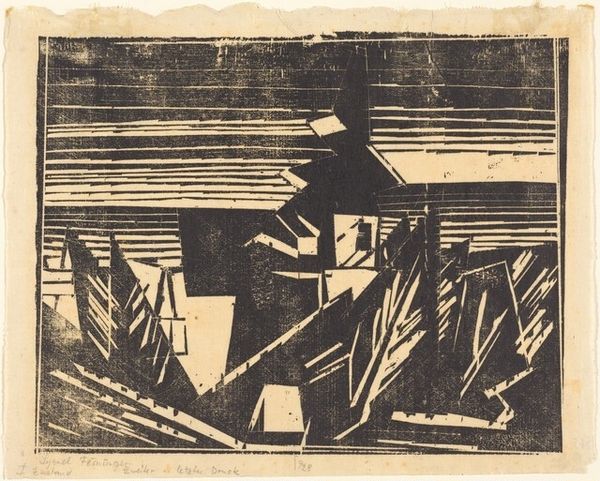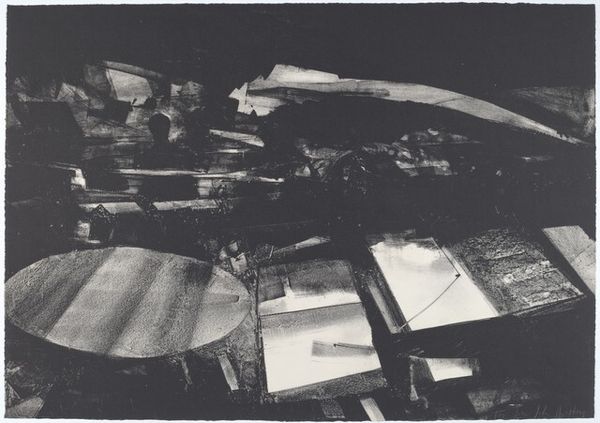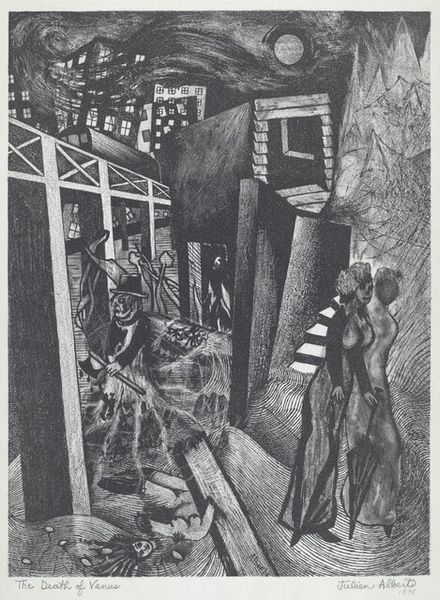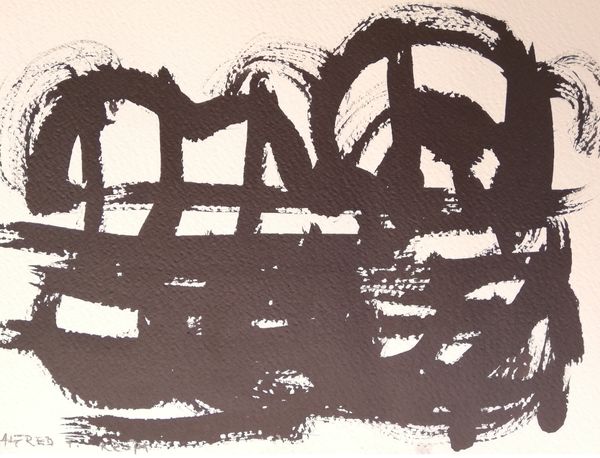
Copyright: Public domain
Curator: Look at this 1936 ink drawing on paper, “View of Szentendre” by Vajda Lajos. It presents a scene from the Hungarian town where he lived. Editor: My first impression is of disquiet. The high contrast and skewed perspective give the buildings a looming, almost oppressive quality. Curator: Well, Lajos, working in Hungary in the interwar years, experienced a politically unstable time. This region specifically experienced a lot of population displacement during the first world war. His engagement with modernist artistic communities pushed boundaries, using art as an outlet for conveying powerful sociopolitical messages. Editor: Yes, but the composition itself seems to emphasize the unease of that period. The strong lines, angular shapes, and almost total absence of human presence contribute to a feeling of emptiness. Even the use of monochrome intensifies the starkness. I find it interesting to follow those bold strokes as they create fragmented but recognizable facades. Curator: Interestingly, the town of Szentendre became something of an artist colony in the early 20th century, particularly appealing to artists from the Eastern Bloc, with the promise of government stipends. These sorts of socio-political arrangements offered artistic talent means of creating art despite the financial hardships that they faced, creating a complex environment of artistic ingenuity but at the cost of state oversight. Editor: That context definitely adds another layer of meaning, knowing the artistic and economic ecosystem that allowed it to be created. Still, regardless of background, the formal components evoke an unsettling reality. The lack of tonal variation flattens the image. Curator: It reflects, I believe, not only personal but collective anxieties of the time. Editor: I appreciate seeing how his artistic response resonates powerfully today with its raw emotionality and dynamic compositions. Curator: Indeed, a reminder of how deeply art and history can be intertwined, enriching our understanding of the human condition.
Comments
No comments
Be the first to comment and join the conversation on the ultimate creative platform.
